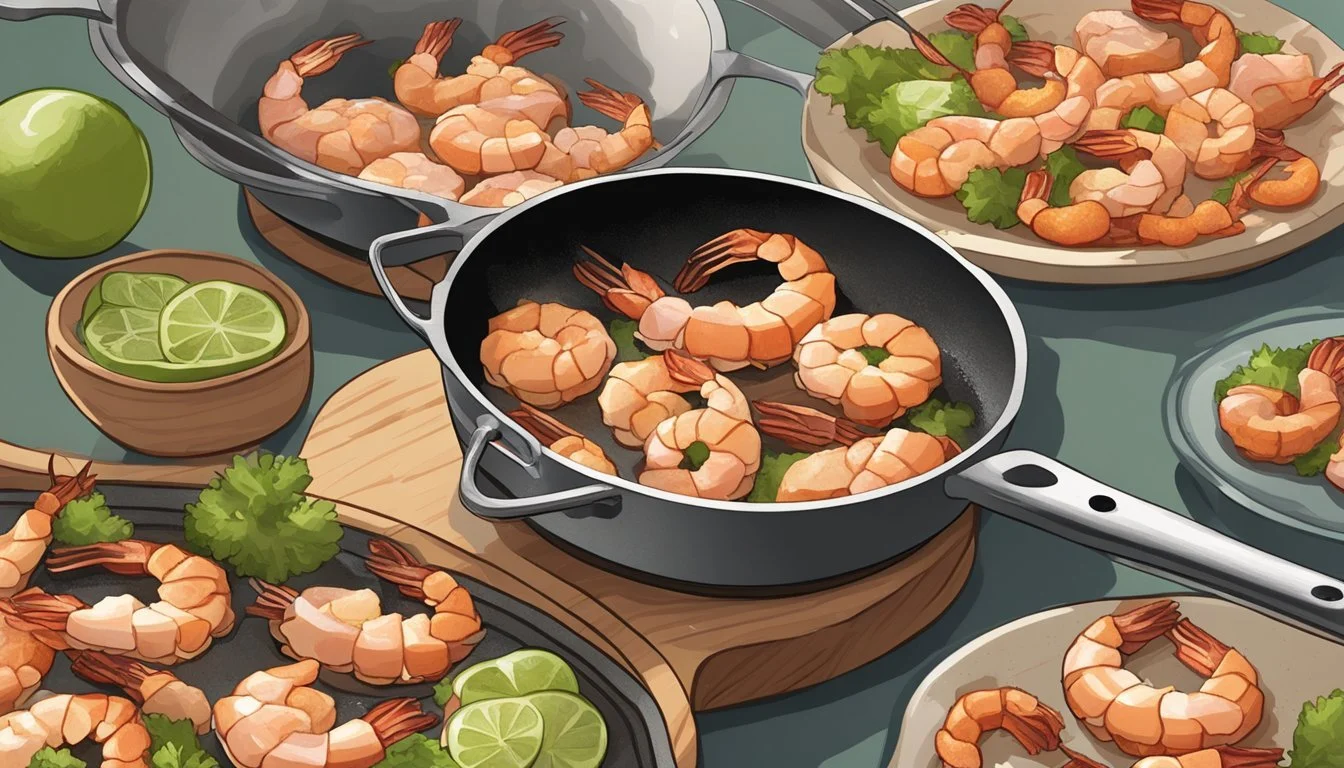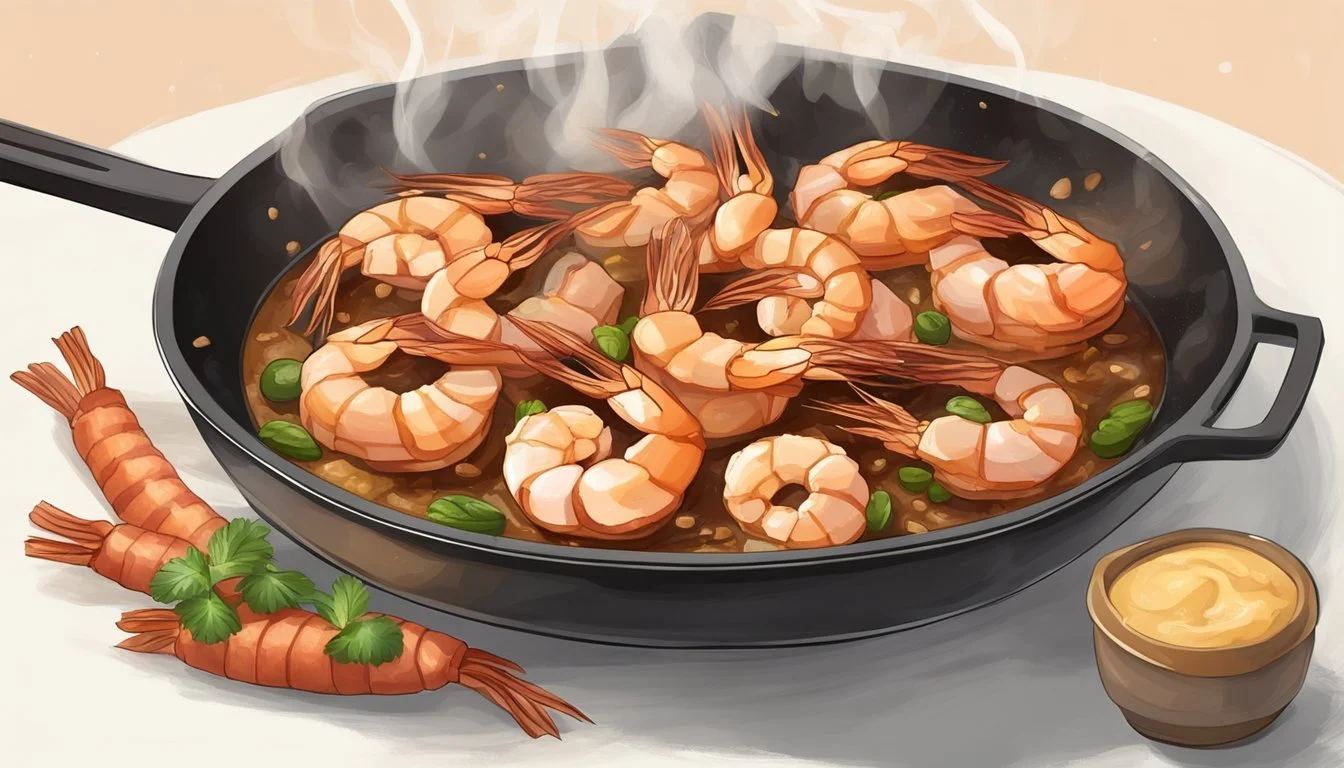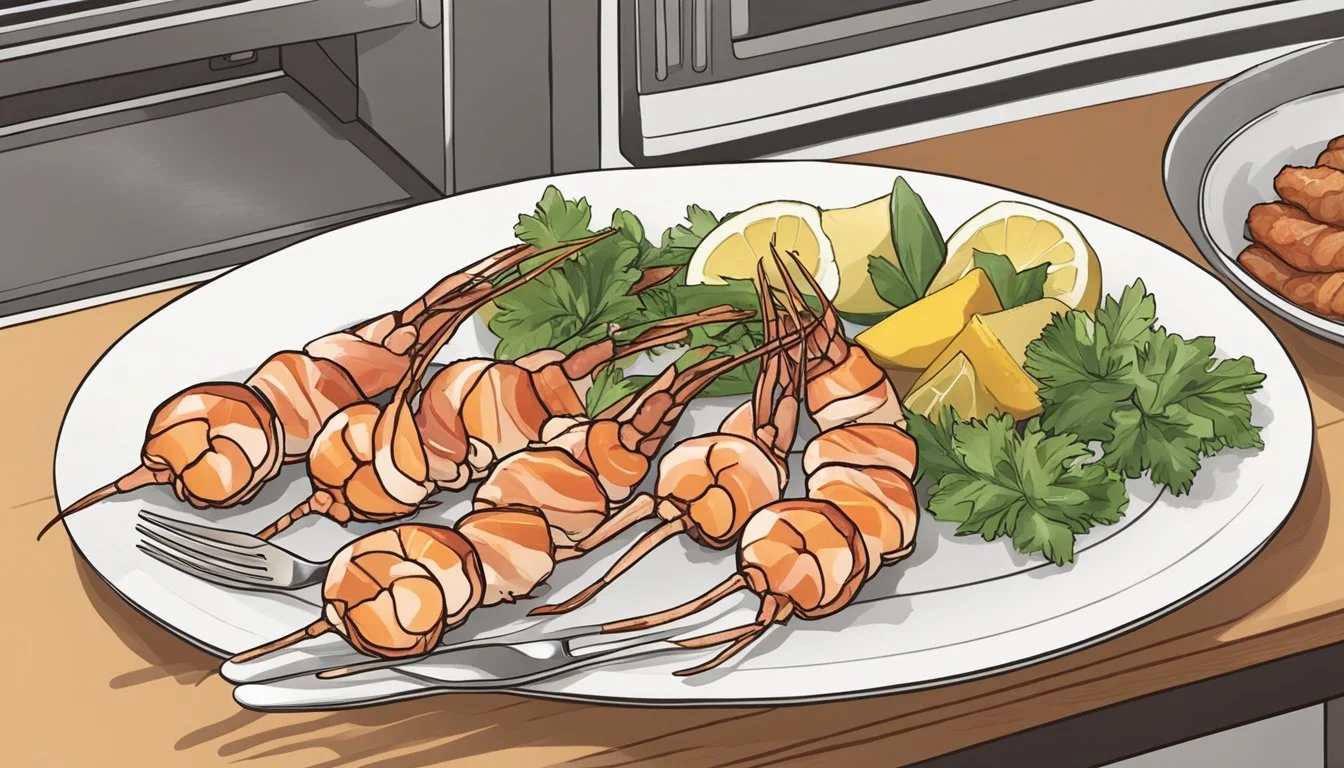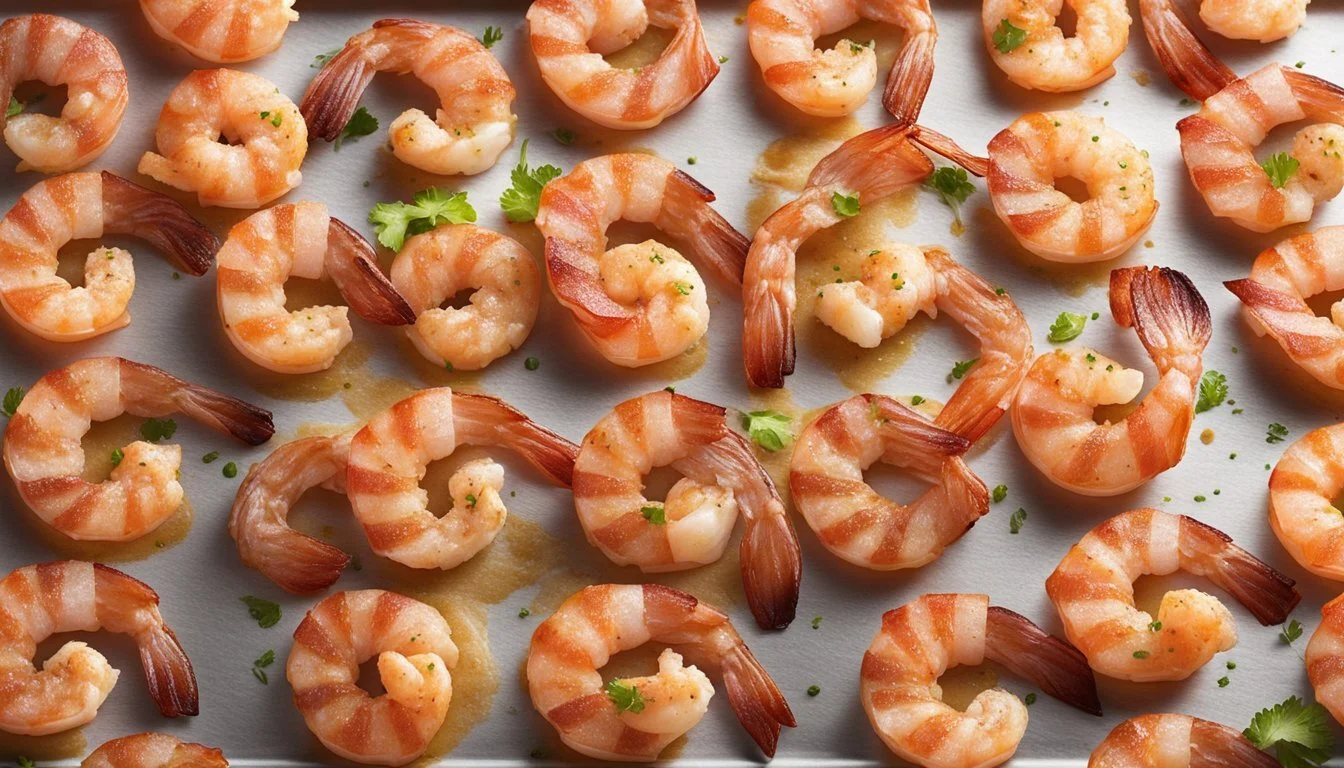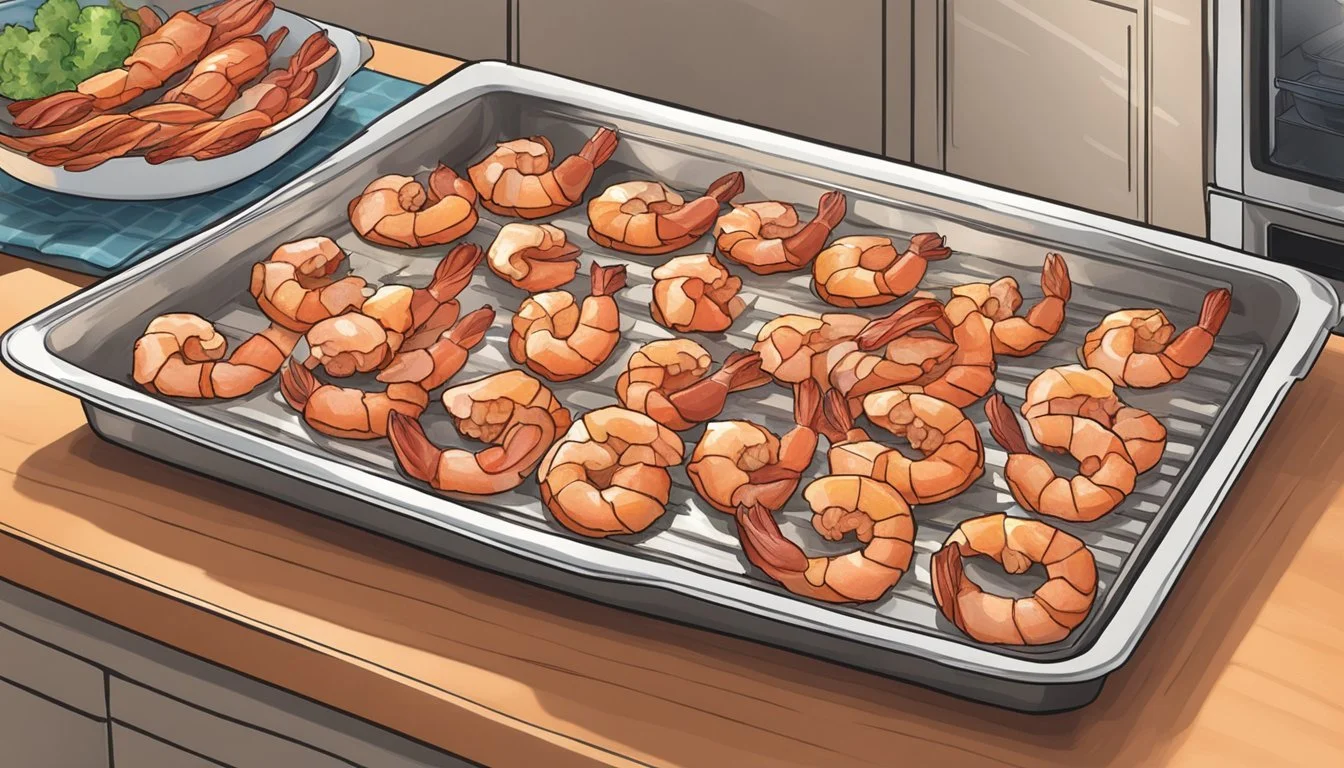Best Way to Reheat Bacon Wrapped Shrimp
Ensuring Succulent Seafood Every Time
Reheating bacon-wrapped shrimp presents a unique challenge—maintaining the delicate balance of crisp bacon while keeping the shrimp succulent and moist. This popular appetizer, known for its rich, savory flavor and contrasting textures, can easily become dry and tough if not reheated properly. The key to preserving the juiciness of the shrimp while ensuring the bacon stays crispy lies in choosing the right reheating method.
Conventional reheating methods can ruin the texture of bacon-wrapped shrimp. Microwaving, for instance, can quickly lead to rubbery shrimp and limp bacon, while oven reheating without proper technique might dry out the seafood. To achieve the best results, one must consider factors such as the shrimp's size, the thickness of the bacon, and the overall density of the dish. There are tried-and-true techniques that cater to these nuances, ensuring that the reheated bacon-wrapped shrimp are nearly as good as when they were freshly cooked.
Understanding the Basics of Reheating
When reheating bacon-wrapped shrimp, the goal is to maintain the succulent texture of the shrimp while ensuring the bacon stays crisp. Mastery of reheat fundamentals and understanding how texture impacts this appetizer are critical to achieving the perfect balance.
Reheat Fundamentals
Reheating bacon-wrapped shrimp properly is crucial to preserve the flavor and texture of both the seafood and protein wrap. The oven is often the preferred method, providing even heating and the ability to bring the bacon to a desirable crispness without overcooking the shrimp.
Preheat the Oven: Start by preheating your oven. A moderate temperature of around 350°F is ideal to warm through without drying out.
Arrange on Baking Sheet: Place the leftovers on a baking sheet, ideally on a wire rack to promote even cooking.
Covering: Lightly tent with aluminum foil to prevent the bacon from burning and to retain moisture.
Why Texture Matters for Bacon Wrapped Shrimp
The texture of bacon-wrapped shrimp is what makes this dish a favored appetizer. Overcooking can make the shrimp rubbery and bacon too crispy or burnt, while undercooking results in a disheartening soggy wrap.
Shrimp: Delicate seafood requires gentle reheating to maintain its tender texture.
Bacon: It's all about achieving that crisp finish without overshadowing the shrimp's juiciness.
By carefully reheating with the principles outlined above, one can revive this dish to a state that rivals its freshly-cooked appeal.
Preserving the Juiciness of Shrimp
The key to preserving the juiciness of bacon-wrapped shrimp lies in the delicate balance of heating technique and ingredient integrity. Ensuring that the shrimp remain succulent requires an understanding of the shrimp's texture and the effects of different reheating methods.
Keys to Juicy Shrimp
Ingredient Quality: Fresh shrimp with a firm texture and clear, shiny shells are more likely to retain their juiciness. It is essential to start with ingredients that are high in quality.
Heating Methods:
Oven: A moderate oven temperature (about 275°F) and a short heating time can warm the shrimp through without drying them out.
Stovetop: Gentle heat in a skillet with a small amount of fat helps retain moisture. Adding a splash of broth can enhance flavor and prevent dryness.
Use of Fats: A coating of fat such as butter or olive oil not only adds flavor but also helps create a barrier that locks in moisture. This is particularly useful when reheating shrimp to keep it juicy.
Seasoning: Lightly salting shrimp with kosher salt before reheating can also aid in moisture retention, as well as enhance flavor.
Avoiding Common Mistakes
Overcooking: Shrimp cook quickly and can become rubbery if overexposed to heat. To maintain succulence, the shrimp should be heated just until they are warm.
High Heat: Avoid high temperatures which can cause rapid loss of moisture, resulting in rubbery shrimp. Reheat shrimp gently and evenly.
Direct Microwave Use: Microwaving shrimp directly can cause uneven cooking and toughness. If the microwave must be used, a low power setting and short bursts with checking in-between is recommended.
By adhering to these guidelines, one increases the likelihood of enjoying reheated shrimp that are as close to their original, succulent state as possible.
Maintaining the Crispness of Bacon
When reheating bacon-wrapped shrimp, it is crucial to employ techniques that ensure the bacon retains its crispness without becoming soggy or losing its texture.
Achieving Crispy Bacon
To achieve crispy bacon, one must consider the method of reheating. Using an oven can effectively preserve the crispiness of bacon. One should:
Preheat the oven to 400°F (210°C).
Line a baking sheet with either foil or parchment paper, depending on preference. Foil reflects heat and can help crisp the bacon, whereas parchment paper can provide a non-stick surface without additional fat.
Place the bacon-wrapped shrimp on the prepared sheet in a single layer.
Cover the tray with another sheet of aluminum foil to prevent drying out.
For those with an air fryer, preheat to 350°F and reheat the bacon for several minutes, checking frequently to prevent overcooking. No additional fat is generally needed, reducing the potential increase in calories and saturated fat.
Balancing Fat and Texture
The texture of bacon is heavily influenced by its fat content. When reheating:
Ensure even heat distribution to avoid chewy or rubbery bacon; using a wire rack can aid in this.
Monitor the reheating process carefully, as the fat on the bacon can go from crispy to burnt quickly.
The calories in bacon are primarily from fat; excessive reheating can increase the saturated fat content by rendering more fat out of the meat.
By carefully balancing the heat and cooking time, one can maintain the bacon's desirable texture and flavor, while also being somewhat mindful of the nutritional aspects.
Best Methods for Reheating Bacon Wrapped Shrimp
When reheating bacon-wrapped shrimp, preserving their juiciness and the crispiness of the bacon is paramount. Using the right method and proper attention to detail can maintain the quality of this dish.
Oven Method
The oven offers a consistent and gentle heat for reheating. One should begin by preheating the oven to a moderate temperature of 350 degrees Fahrenheit. The shrimp should be placed on a baking sheet lined with foil to prevent sticking and ensure easy cleanup. It's helpful to arrange them in a single layer to ensure even heating. One must bake the shrimp for about 10-15 minutes, checking periodically to avoid overcooking.
Key Steps:
Preheat oven to 350°F (175°C).
Line a rimmed baking sheet with foil.
Place shrimp in a single layer.
Bake for 10-15 minutes.
Air Fryer Technique
An air fryer can reheat bacon-wrapped shrimp efficiently, preserving the texture better than other methods due to the circulation of hot air. Set the air fryer to 290 degrees Fahrenheit and reheat the shrimp in a single layer for 5-10 minutes. The reduced temperature is essential to ensure the bacon doesn't burn while allowing the shrimp to heat through.
Key Steps:
Preheat air fryer to 290°F (143°C).
Arrange shrimp in a single layer.
Heat for 5-10 minutes.
Broil Option
Broiling is a suitable method for those who desire a crispier bacon finish. It is critical to watch the shrimp closely when using the broiler to avoid burning. They should be placed on a broiler pan and positioned in the oven so that they are a few inches away from the broiler element. Reheat under the broiler for 1-2 minutes on each side, using a toothpick to secure the bacon if necessary.
Key Steps:
Position oven rack a few inches from the broiler element and preheat broiler.
Secure bacon with a toothpick if necessary.
Place shrimp on a broiler pan.
Broil 1-2 minutes on each side.
By following these methods, reheating bacon-wrapped shrimp can be done effectively to maintain its delicious quality.
Complementary Foods and Serving Suggestions
When serving bacon-wrapped shrimp, selecting side dishes and dipping sauces that enhance their flavor and add variety to the meal is essential. Different accompaniments can elevate this dish from a mere appetizer to a satisfying main course.
Side Dishes
For a well-rounded meal, the choice of side dishes is crucial. Side dishes should balance the rich flavor of the bacon and the delicate taste of the shrimp. Here are some specific recommendations:
Appetizers: (What wine goes well with appetizers?) To start, one could consider lighter appetizers such as grilled fruit kabobs or jalapeno poppers.
Salads: A fresh mango pico de gallo or a crisp red cabbage slaw offers a refreshing contrast to the smokiness of the bacon.
Main course options: The bacon-wrapped shrimp often act as the star in a surf and turf combo, paired excellently with miniature crab cakes or a slice of steak.
Starches: For starchier sides, one should think of cilantro lime rice for a zesty kick, or cheesy grits for creamy comfort.
Dipping Sauces
The right dipping sauce can add moisture and elevate the flavors of bacon-wrapped shrimp. A variety of sauces can cater to different palates:
Citrusy Options: Lemon wedges squeezed over the shrimp or a lemon-infused aioli provide a tangy, refreshing note.
Creamy Sauces: A garlic aioli or remoulade sauce can offer a smooth and savory flavor that complements both the bacon and shrimp.
Bold Flavors: For those who enjoy a touch of heat, a spicy cocktail sauce or a Sriracha-infused mayo can add a fiery kick to the dish.
Portioning for these sides and sauces should be done with consideration of the richness of bacon-wrapped shrimp, ensuring a satisfying but not overwhelming dining experience.
Nutritional Considerations for Reheated Dishes
When reheating bacon-wrapped shrimp, it's important to consider how the process may affect the nutritional profile of the dish, including caloric and fat changes, as well as the preservation of vitamins and minerals.
Calorie and Fat Content
Bacon-wrapped shrimp is a dish that inherently contains calories from both the bacon and the shrimp. The bacon contributes both calories and fat, particularly saturated fat, which can be of concern for those monitoring their heart health. When reheating, it's essential to be mindful that additional cooking methods can slightly alter the fat content by rendering more fat out of the bacon or by causing some of it to be absorbed by the shrimp.
Calories: A single bacon-wrapped shrimp may have around 30-40 calories.
Fat: Usually between 2-3 grams per piece, with saturated fat content depending on the type of bacon used.
Vitamins and Minerals
Shrimp is a nutritious seafood that's a good source of several important minerals. It is rich in selenium, iodine, and phosphorus, and also provides potassium, calcium, and magnesium. Small amounts of vitamin A, vitamin C, and iron are also present. However, with the addition of bacon, the sodium content increases significantly.
Sodium: Bacon adds sodium, so a single piece can contain a significant amount of daily recommended intake.
Vitamin A and C: Primarily present in the shrimp, and these nutrients can be susceptible to degradation through the reheating process.
When handling and reheating food, it's crucial to maintain its ingredients' nutritional facts and avoid additional ingredients that might significantly alter the dish's nutritional values.
Additional Tips and Tricks for Perfect Results
In reheating bacon-wrapped shrimp, maintaining their juiciness hinges on proper seasoning adjustments and careful attention to cooking times and temperatures.
Seasoning Adjustments
Before reheating, one should assess the seasoning levels as they may have diminished. A light sprinkle of sea salt or kosher salt can help perk up the flavors. For a smoky zest, one can lightly dust the bacon-wrapped shrimp with paprika or chili powder. If a seafood kick is desired, a pinch of Old Bay seasoning can be added. For those who prefer a peppery note, a gentle touch of freshly ground black pepper or lemon pepper will do wonders. It's important to apply these seasonings sparingly to avoid overpowering the delicate shrimp.
Spice Cheat Sheet:
Sea Salt: Enhances natural flavors
Kosher Salt: For a crispier bacon edge
Paprika: Adds a smoky undertone
Chili Powder: A touch for heat
Old Bay Seasoning: Seafood enhancer
Ground Black Pepper: For a slight kick
Lemon Pepper: Citrus zest with a bite
Cooking Times and Temperatures
Reheating bacon-wrapped shrimp requires a nuanced approach to retain moisture. The oven should be preheated to a lower temperature, around 325°F (163°C), to gently warm the interior without drying out the shrimp or hardening the bacon. Cook times can vary, but typically, 10-15 minutes should suffice, depending on the shrimp's size and the oven's efficiency. Using aluminum foil to tent the shrimp can prevent the bacon from overcooking.
Temperature Guide:
Prep Time: Minimal; depends on seasoning
Preheat Oven: 325°F (163°C)
Total Time: Approximately 10-15 minutes
Cooking times and temperatures may need slight adjustments based on the oven's characteristics and the bacon's thickness and previously reached internal temperature. Shrimp should be monitored closely for the best results; overcooking can lead to toughening of the delicate seafood.
Storage and Food Safety
Proper storage and handling ensure the safety and quality of bacon wrapped shrimp when reheating. Paying attention to temperature control and moisture will maintain both the juiciness of the shrimp and the crispness of the bacon.
Storing Leftovers
Leftovers of bacon wrapped shrimp should be stored in an airtight container to prevent them from drying out. They must be refrigerated within two hours of cooking to reduce the risk of bacterial growth. The optimal temperature for refrigeration is below 40°F (4°C). Stored correctly, they can be kept for up to 3 days. It's critical to avoid cross-contamination with raw ingredients, especially fresh shrimp, which may carry bacteria that can spoil the cooked food.
Refrigeration time: Up to 3 days
Temperature: Below 40°F (4°C)
Container: Airtight
Freezing and Thawing Procedures
For extended storage, bacon wrapped shrimp can be frozen. To freeze, one should:
Wrap the shrimp tightly in plastic wrap or aluminum foil.
Place them in a freezer bag, pressing out as much air as possible.
Freeze at 0°F (-18°C) to preserve the fats, both olive oil and the saturated fat from the bacon, which can turn rancid if improperly stored.
When it comes to thawing, the bacon wrapped shrimp should be moved from the freezer to the refrigerator and allowed to thaw overnight. It’s important not to thaw at room temperature, as the differential thawing of the shrimp protein and bacon fat could lead to uneven texture and potential food safety issues.
Freezing temperature: 0°F (-18°C)
Thawing method: Refrigerator overnight
Wrapping materials: Plastic wrap, aluminum foil, freezer bag
Recipe Variations and Substitutions
Adapting the classic recipe for bacon wrapped shrimp to accommodate different dietary needs or pantry supplies is straightforward. The following suggestions ensure the dish remains succulent while infusing personal taste preferences or nutritional requirements.
Dietary Modifications
For those following specific dietary regimens, suitable substitutions can make bacon wrapped shrimp a fitting choice:
Low Sodium: Opt for low-sodium bacon instead of regular bacon to wrap the shrimp, maintaining the savory flavor without excess salt.
Gluten-Free: Verify that all added ingredients such as spices and sauces are certified gluten-free.
Dairy-Free: If the recipe includes cream cheese, one can substitute with dairy-free alternatives like cashew cheese spread to achieve a similar creaminess.
Alternative Ingredients
Experimenting with alternative ingredients can breathe new life into the traditional bacon wrapped shrimp recipe:
Bacon Alternatives: For a different taste profile, prosciutto or turkey bacon can replace traditional pork bacon. This can lend a unique flavor while keeping the shrimp moist.
Fillings and Wraps: Introduce cream cheese to the shrimp filling for extra richness or consider a scallop for a surf and turf variant. These additions complement the sweet and smoky bacon, enhancing the overall dish.
Spices: Basic salt and pepper can be expanded upon with spices like smoked paprika or a dry rub mix to add depth. Fresh herbs can also elevate the freshness of the dish.
Sweet Substitutes: In place of brown sugar, drizzling honey or maple syrup over the shrimp before cooking can offer a distinctive sweet twist to the bacon-wrapped shrimp.
Conclusion
When reheating bacon-wrapped shrimp, one aims to maintain their juiciness while ensuring the bacon retains its crispness. The oven method is typically preferred, as it heats the shrimp evenly without drying them out. Preheating the oven to 300°F and placing the shrimp on a baking sheet in a single layer for about 15 minutes is a reliable approach. Covering them with aluminum foil can help to lock in moisture.
For a quicker method, the microwave can be used with care. The shrimp should be arranged in a single layer on a microwave-safe plate, lightly sprinkled with water, and covered. Heating on high for one to two minutes should suffice, but caution is necessary to avoid overheating and rubbery texture.
Regardless of the method chosen, it’s critical for one to check the shrimp’s temperature to ensure they are heated through but not overcooked. It's not recommended to reheat shrimp multiple times as this can lead to a decline in quality.
To summarize, the key points for reheating bacon-wrapped shrimp include:
Oven Reheat: 300°F, covered, 15 minutes
Microwave Reheat: Single layer, splash of water, high heat, 1-2 minutes
Check Temperature: Ensure even heating without overcooking
Avoid Multiple Reheats: To preserve the quality of the shrimp
By adhering to these guidelines, the shrimp will remain as delicious as they were when first served.

